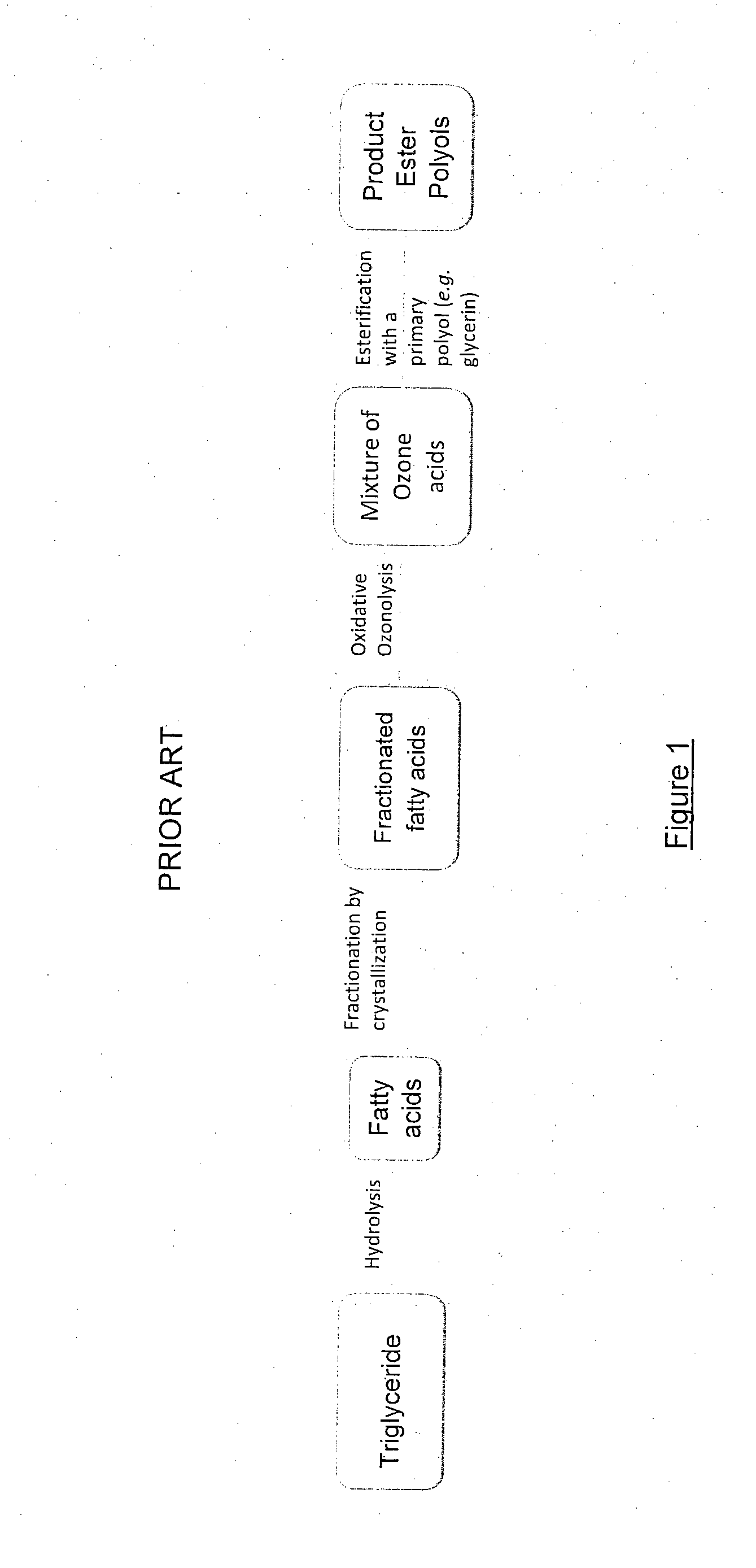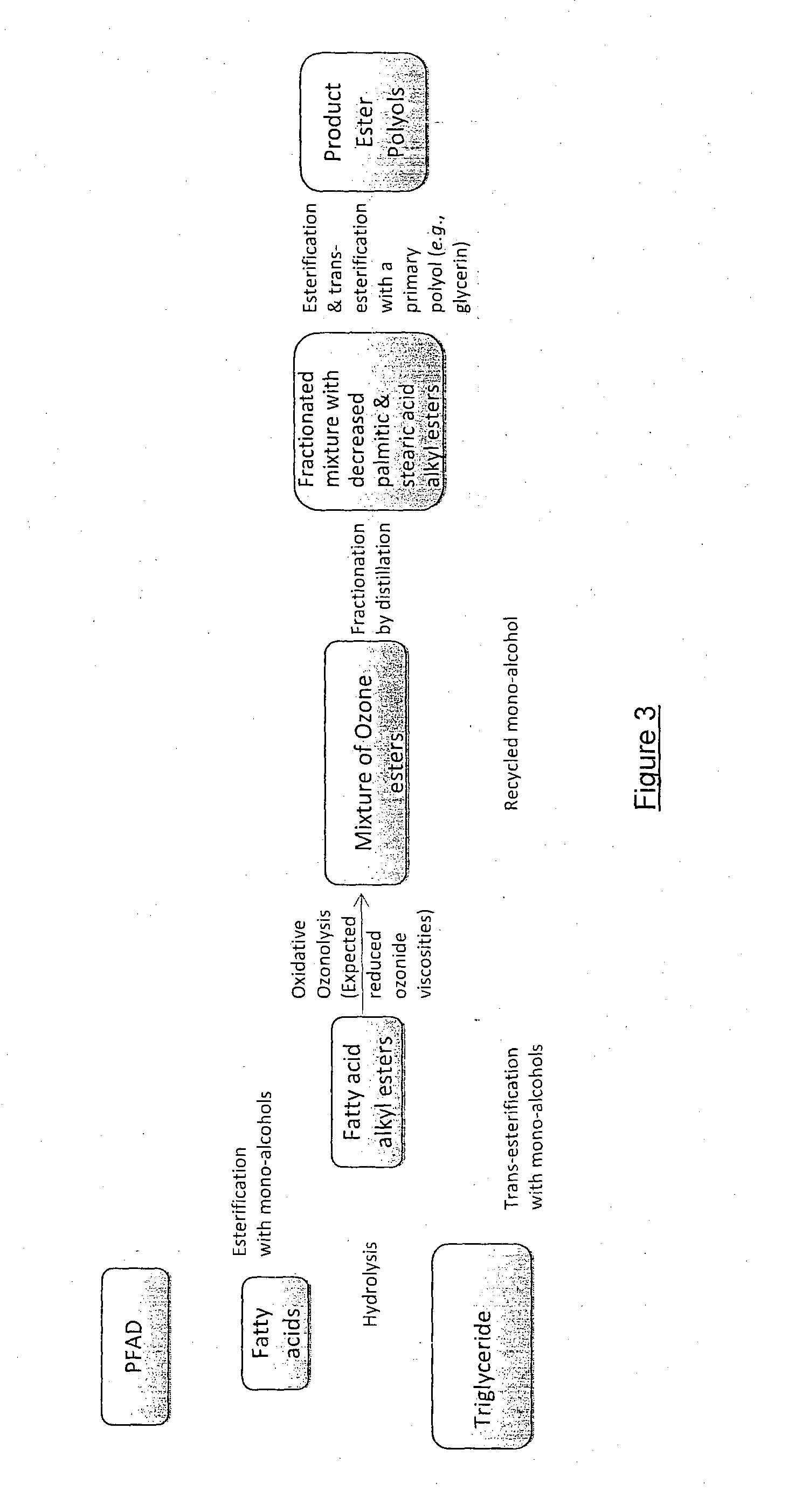Method for the production of polyols and uses thereof
- Summary
- Abstract
- Description
- Claims
- Application Information
AI Technical Summary
Benefits of technology
Problems solved by technology
Method used
Image
Examples
Embodiment Construction
[0014]The present invention relates to a method for the preparation of polyols. An aspect of the present invention relates to the pre-treatment or process steps performed on the feedstock that enables a wide range of feedstock to be used to produce ester polyols.
[0015]Such treatment steps relates to the hydrolysis of triglyceride-based feedstock to produce the fatty acids and followed by esterification with a monoalcohol to produce a fatty acid alkyl ester, which is the main building molecule used to produce ozone esters via the oxidative ozonolysis. Alternatively, the triglyceride-based feedstock, such as, palm oil and olein can be trans-esterified with a monoalcohol to produce a fatty acid alkyl ester.
[0016]The resulting fatty acid alkyl esters may undergo fractionation by distillation to produce fractionated fatty acid alkyl esters. This approach reduces the level of saturation in the fatty acid alkyl esters, specifically the level of palmitic and stearic alkyl esters. This corre...
PUM
 Login to View More
Login to View More Abstract
Description
Claims
Application Information
 Login to View More
Login to View More - R&D
- Intellectual Property
- Life Sciences
- Materials
- Tech Scout
- Unparalleled Data Quality
- Higher Quality Content
- 60% Fewer Hallucinations
Browse by: Latest US Patents, China's latest patents, Technical Efficacy Thesaurus, Application Domain, Technology Topic, Popular Technical Reports.
© 2025 PatSnap. All rights reserved.Legal|Privacy policy|Modern Slavery Act Transparency Statement|Sitemap|About US| Contact US: help@patsnap.com



